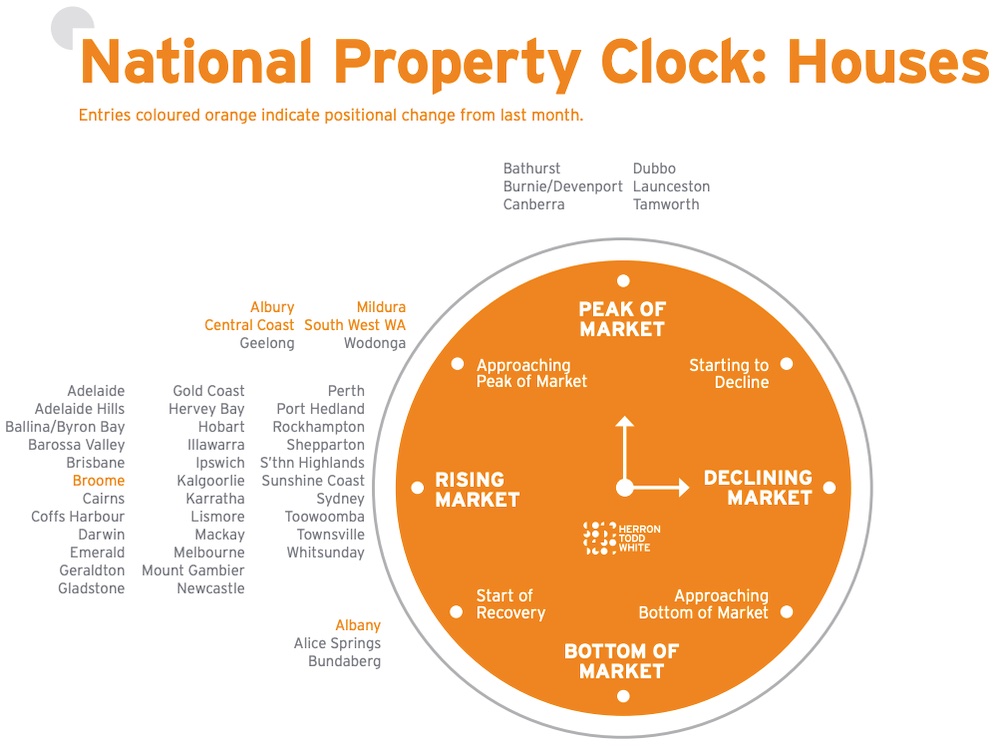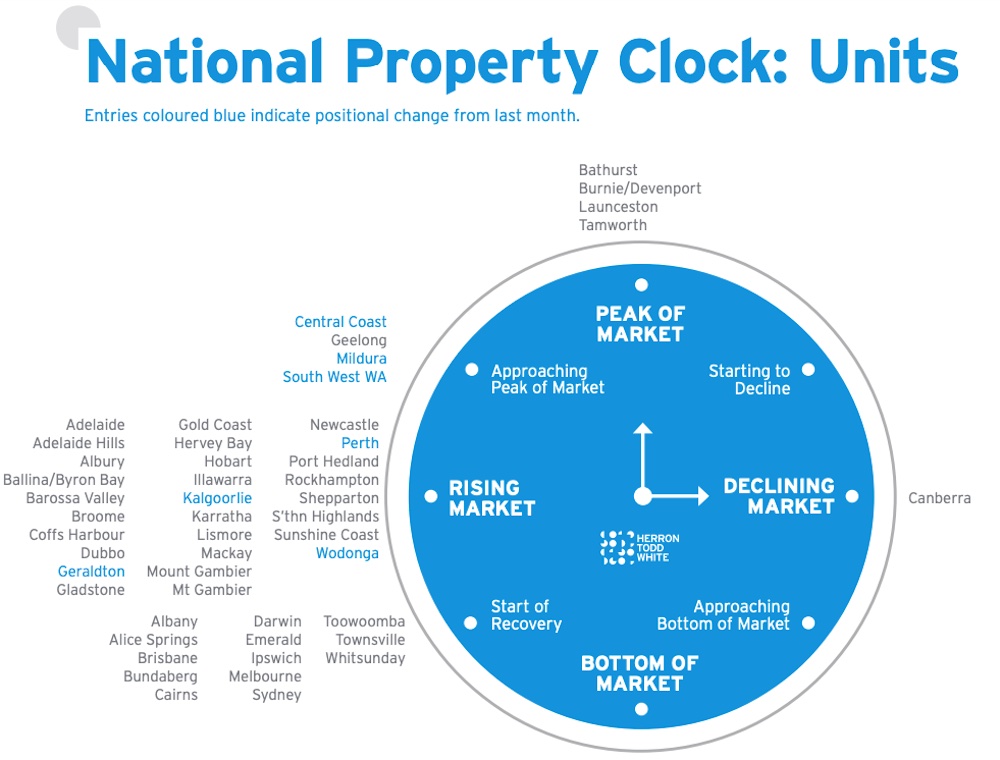Property Clock: is your market rising or falling?
After blistering growth and seemingly unstoppable momentum over the first half of this year, the Australian property boom has been met with another very substantial interruption in the form of the Delta variant.
Every month, independent property valuation firm Herron Todd White (HTW) puts together a residential property report that takes a thorough look at every level of the Australian real estate market.
The health of 50 of the country's top cities and regions is positioned on their Property Clock which identifies the markets that are rising, falling, peaking and bottoming out.
With Covid outbreaks locking down much of the East Coast and consumer confidence rattled elsewhere, how has HTW graded those 50 markets this month?
Cities at or approaching their peak
"While recent months have been a trial for many Australians, we remain positive in our outlook for the remainder of the year," the report begins.
That sentiment is very clearly reflected in the Property Clocks for this month.

In terms of markets they deem to be approaching their peak, houses in the NSW Central Coast, Geelong, Albury and Wodonga, Mildura and South West WA are all creeping up to the top.
While they point out that "the Central Coast region is seen by many as an affordable neighbour to the Sydney metropolitan area," they note that affordability—like many other places—is becoming more of an issue.
Units in the Central Coast, Geelong, Mildura and South West WA also find themselves in that 'approaching peak of market' category.
Looking on to markets at their peak (areas where HTW believe won't see much, if any, further growth), both houses and units in Bathurst, Launceston, Tamworth and Burnie/Devenport have reached the top spot on the clock.
Houses in Canberra and Dubbo have also reached that summit, they say.
Cities on the decline or bottoming out
The declining categories in HTW's monthly report have been close to empty throughout the 2021 boom.
It's a testament to the firm's bullish outlook, then, that those segments are all but empty in their latest analysis.
Only one market finds itself anywhere within that part of the spectrum, and that's units in Canberra.

With the Australian capital growing at such staggering rates this year—+20.5 per cent annually, according to CoreLogic—HTW believe a combination of factors like weaker demand for units and a resulting decline in new construction means the ACT's attached housing belongs in the 'declining markets' sector.
The good news is that, as far as they're concerned, no other major city or region in the country is showing similar signs of being on the decline.
Cities on the rise
That leaves the 'start of recovery' and 'rising market' sectors of the Property Clock, and it's where the vast majority of cities find themselves.
The strongest sentiment is with houses, with a whopping 34 of the 50 cities and regions all classed as rising markets.
Save for Canberra, all the state capitals including Sydney, Melbourne and Brisbane are firmly in that rising bracket.
Regional destinations like Ballina/Byron, the Sunshine Coast and the Gold Coast, which have all seen huge growth so far in 2021, are all tipped to continue their upward trend.
Unit markets, which on a national level have been growing at around half the pace of houses throughout this boom, are looked at a little more conservatively.
Sydney, Melbourne and Brisbane units are all described as being at the 'start of recovery', indicating there may be more prosperous times ahead for apartment owners in those cities.
"In the unit market, it is forecast that approximately 34,250 high-density homes will be supplied across Melbourne by 2024, well under the 42,250 in the past three years," the report reads.
"This under supply will typically cause unit prices to rise as international migration returns after Covid restrictions ease, creating opportunity for potential investors and helping to reduce doubt in the unit market."
Northern locations like Ipswich, Darwin, Cairns and Townsville have a similarly positive outlook, with HTW saying they can look forward to increased growth in the future as far as units are concerned.







